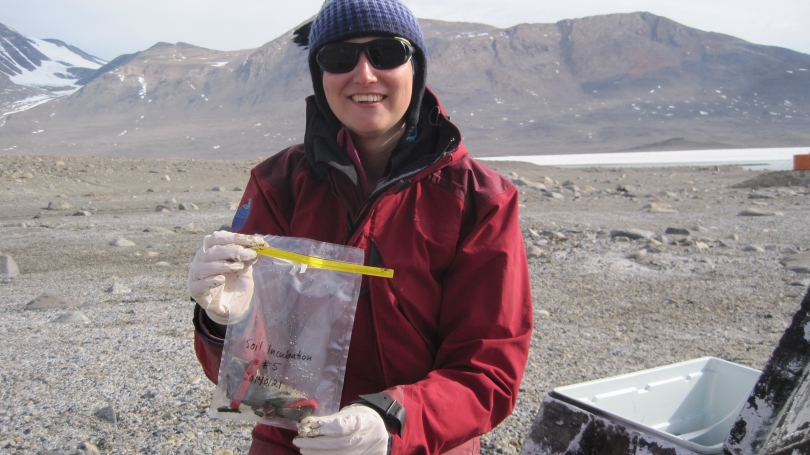
Menu
- About
- Programs
- Student Opportunities
- For Faculty
- News & Events
Back to Top Nav
Back to Top Nav
Back to Top Nav
Back to Top Nav
Back to Top Nav
Ruth Heindel, Ph.D. Student, Earth Sciences
Ruth Heindel studies soils, a valuable resource for Greenland that supports natural ecosystems and also agricultural activity in South Greenland. Specifically, she studies past and present wind-driven soil erosion, a process that threatens soil resources by removing soil and disturbing vegetation.
During the summers of 2012 and 2013, Ruth collected spatial data describing eroded areas in the Kangerlussuaq region. Additionally, she measured lichen diameters in order to estimate past and present rates of soil erosion. In the spatial analysis lab at Dartmouth, Ruth has developed a land cover classification for the Kangerlussuaq region that identifies eroded areas from satellite imagery. She has found that eroded areas generally occur on steep south-facing slopes, and are much more common closer to the Greenland Ice Sheet.
Ruth's lichenometry data show that ongoing soil erosion has the potential to remove valuable organic matter and disturb vegetation in dry regions like Kangerlussuaq. Ruth's work is crucial for understanding how soil erosion has changed during past climate fluctuations and allows for more precise predictions of what will happen to soil erosion as the climate continues to change.
Read more about Ruth's work in the field and view her amazing drawing on the Dartmouth Polar Environmental Change blog.
YouTube: Ruth Heindel talks about how deglaciated landscapes respond to climate change